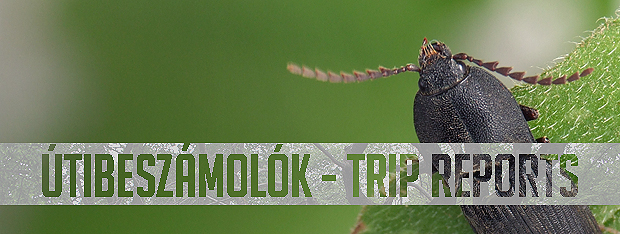
TRIP REPORTS
V.2013.
Budapest
Going around clear-eyed in Budapest,
a coleopterologist is glad to encounter numerous beautiful and unique
beetles which share our urban habitat. Green areas and trees along busy
roads may house species that are mostly found outside crowded cities.
Although longicorns and jewel beetles are among the most spectacular
and conspicuous beetles in Hungary, they share their lives with humans
at places not considered suitable for beetles at all, without being
detected. Most photos of such urban habitats were captured by camera
phone because I didn’t have my camera with me.

The presence of Lamprodila festiva was
first detected in Budapest last summer. http://www.ng.hu/Termeszet/2012/08/vedett_bogarbol_tujakartevo
Since then a number of its
characterstic exit holes have been discovered in many places, and lots
of specimens from different sites have been reared succesfully.
However, the touching encounter happened in late May this year in
Óbuda. Last year I discovered a few holes on the bark of some
specimens of oriental thuja (Platycladus
orientalis). The trees being completely dead, were recently cut
down and replaced with young ones.

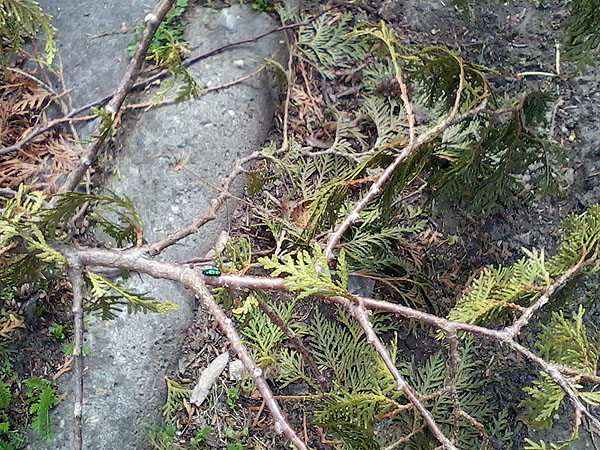
The weather was chilly and windy when I reached the woodpile, at the top of which a startled jewel beetle was shivering. Getting closer I was astonished to see a dozen of beetles on the shoots. These beetles preferring warm climate and light usually fly away when disturbed. But this time it was too cold for them to take off. I just shoke the tree and plenty of torpid beetles were falling down like little shiny gems.

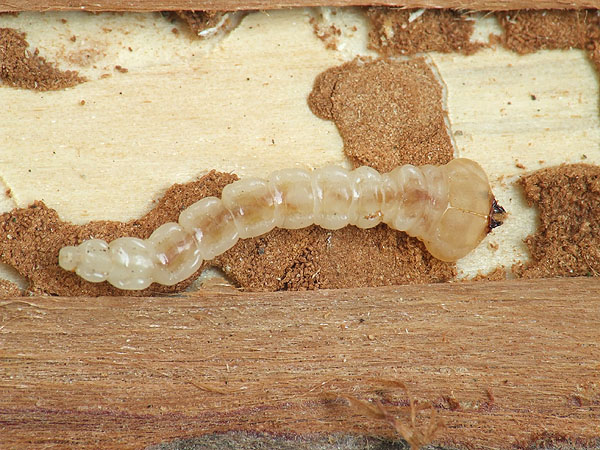
Larva of Lamprodila festiva
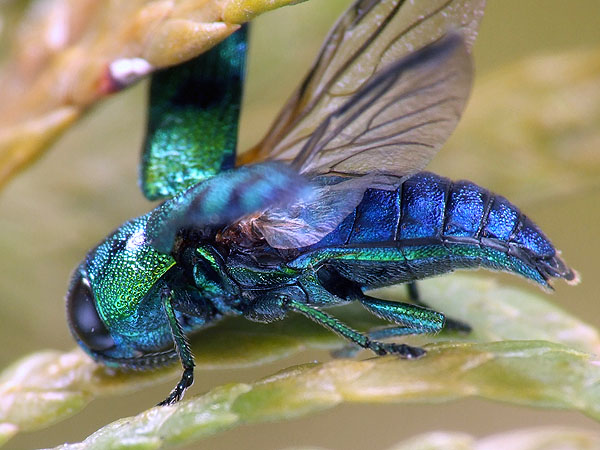
Lamprodila (Palmar) festiva (Linnaeus, 1767).
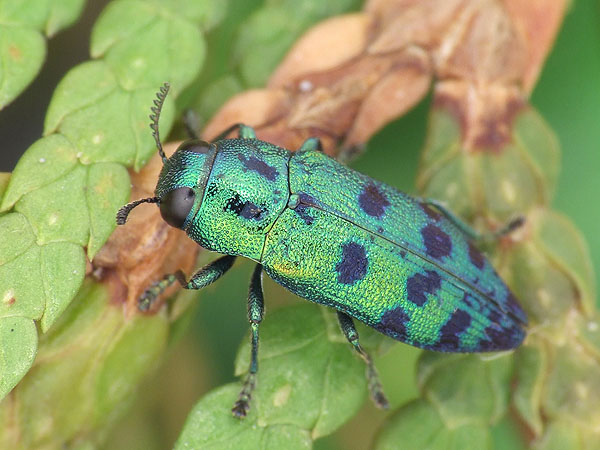
Gardeners and botanists will not be happy about to see the increasing number of Lamprodila festiva, which are likely to cause serious damage to trees of cedar family in Budapest during the summer.
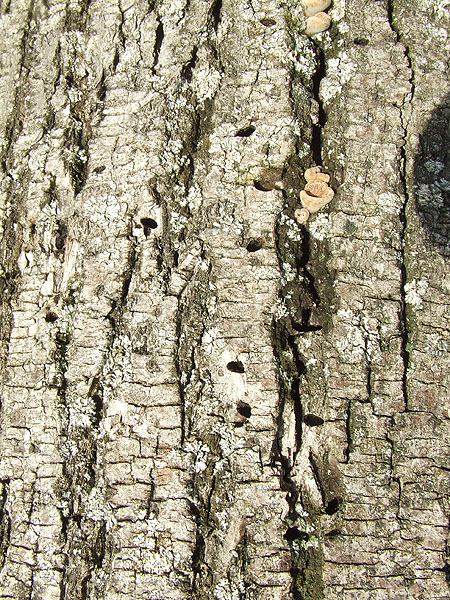
Lampra rutilans, also occurring in
large numbers, was mostly found in Városliget, a city park close
to the city centre. Their occurrence is well documented through a
bunch of photos and reports by Nikola Rahmé, a coleopterist
colleague and macro photographer:
http://buprestidae.blogspot.hu/2007/05/2007v24-budapest-vrosliget.html
http://rahme.blogspot.hu/2008/05/budapest-vrosliget-idn-is.html
http://rahme.blogspot.hu/2007/06/vrosi-cincrek-s-egyb-bogarak.html
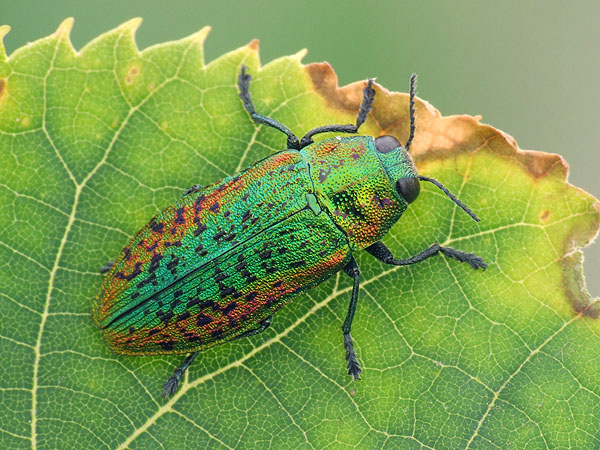
Lamprodila (Lamprodila) rutilans (Fabricius, 1777). This specimen came out of a piece of bark from linden tree which was to be added to the teaching collection of damaged plant material.
Articles on both species were published in a science magazine called Élet és Tudomány:


Preparing for my exams
I discovered the exit holes of another jewel beetle occurring in urban
habitat in the Buda Arboretum of Corvinus University. Although the
close Sas Hill and other places of Buda Hills accommodate many beetle
species, finding Dicerca berolinensis
(Herbst, 1779) on a hornbeam in the city is definitely noteworthy. The
arboretum is an excellent site for collecting beetles anyway. Diverse
flora and appropriate management of the site, such as preserving hollow
trees and decaying branches, all provide proper conditions for rather
rare species.

Flight holes on Carpinus betulus pendula.
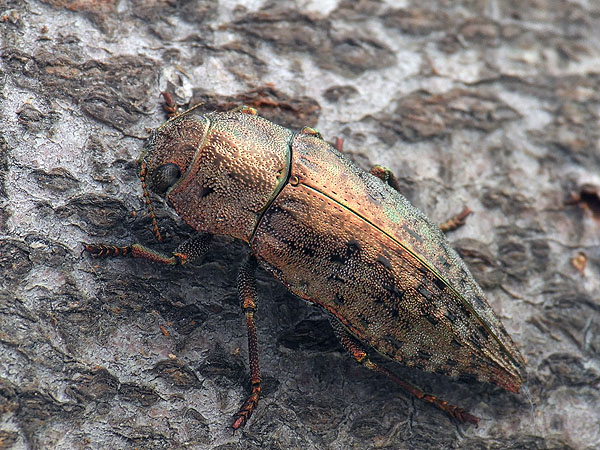
Dicerca berolinensis (Herbst, 1779).

Approaching my home close to a part of the city that is one of the most inhospitable places for both the Coleoptera and the coleopterologists, I recognised the presence of a further jewel beetle species. There are ornamental trees such as maple trees along the sides of the bike trail I use. Many of them are dying from pollution.

Close inspection of the trees revealed plenty of exit holes of Chrysobothris affinis (Fabricius, 1794), which can usually be observed on piles of oak wood. However, not being a picky eater, Chrysobothris affinis can be found in several tree species. It has already been reared from cherry and Robinia.

Chrysobothris affinis (Fabricius, 1794).


Who would even think of finding rare beetles at a bus stop? Last year I came accross Anisarthron barbipes (Schrank, 1781) on a Common hackberry tree (Celtis occidentalis) trunk. In nature I have seen it twice in my life, at most. New exit holes and females laying eggs on the damaged trunk both indicated that this longicorn had adapted well to conditions associated with urban landscape
.
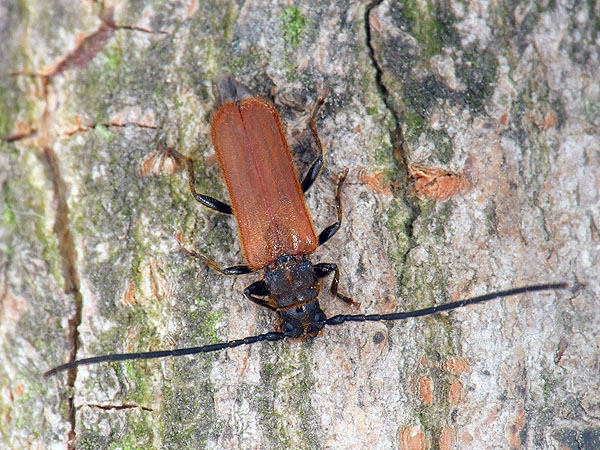
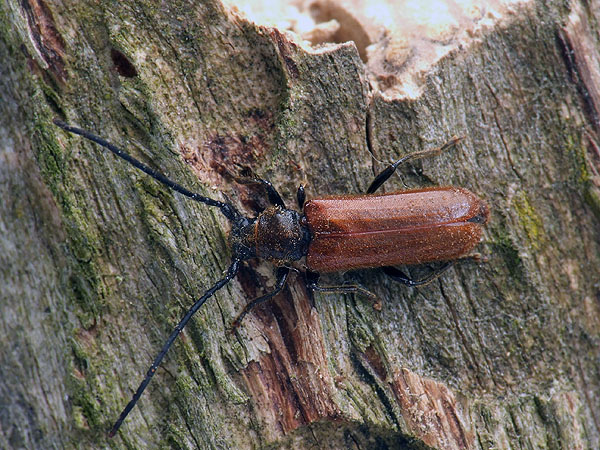
Anisarthron barbipes (Schrank, 1781) – szőrös cincér.
Copyright
©
2009. Hungarian Natural History Museum,
Department of Zoology, Coleoptera Collection